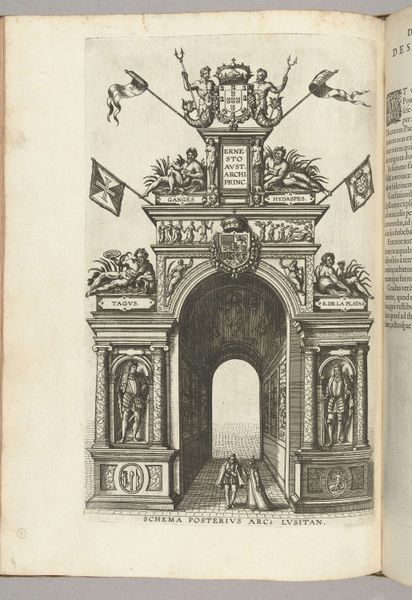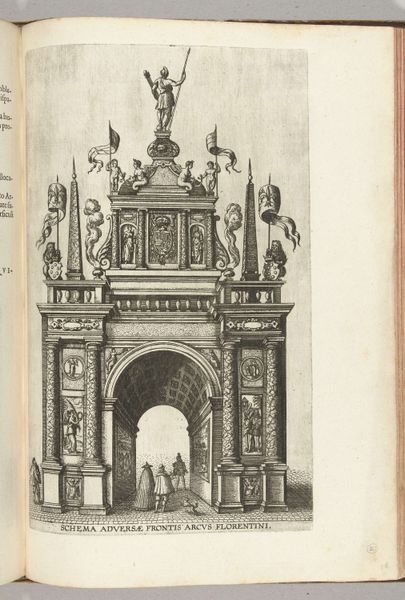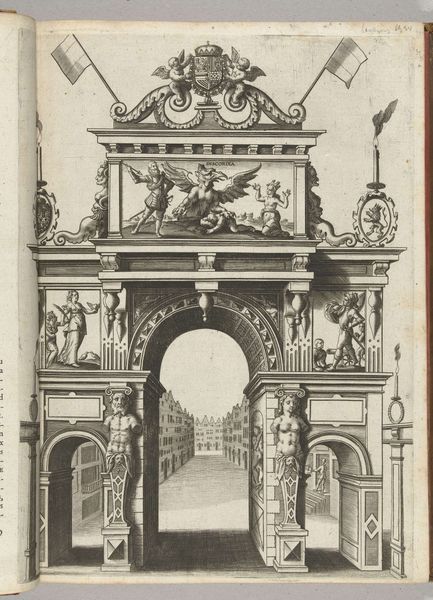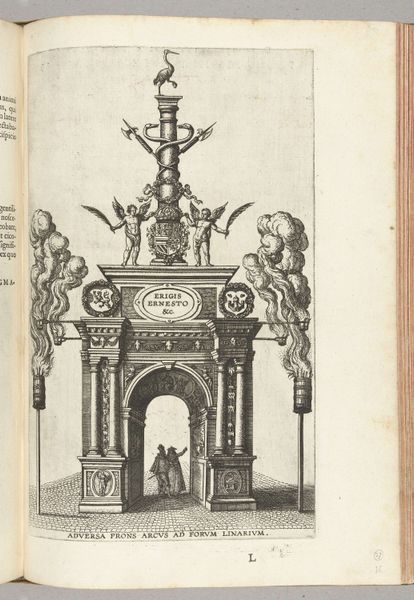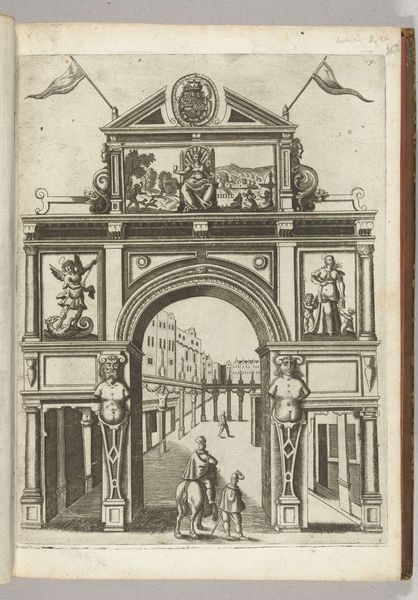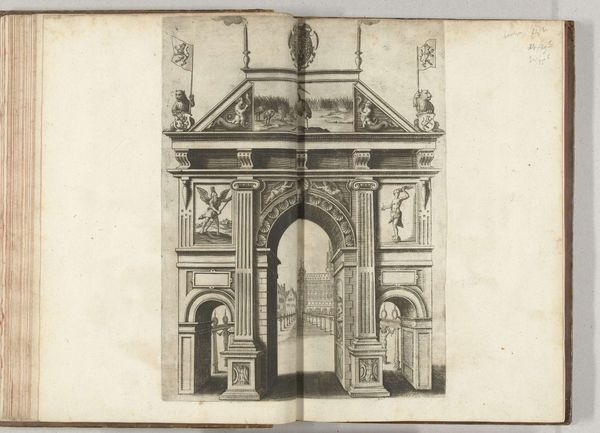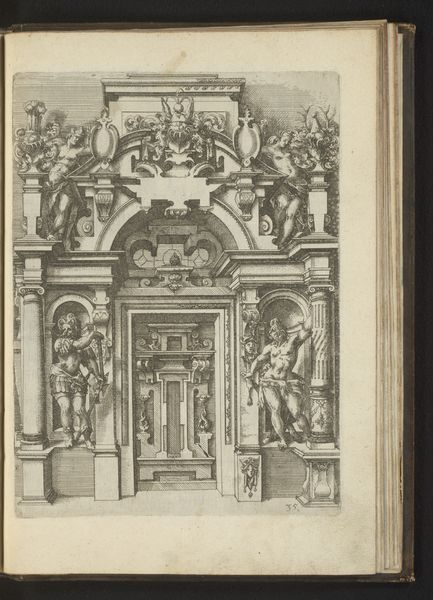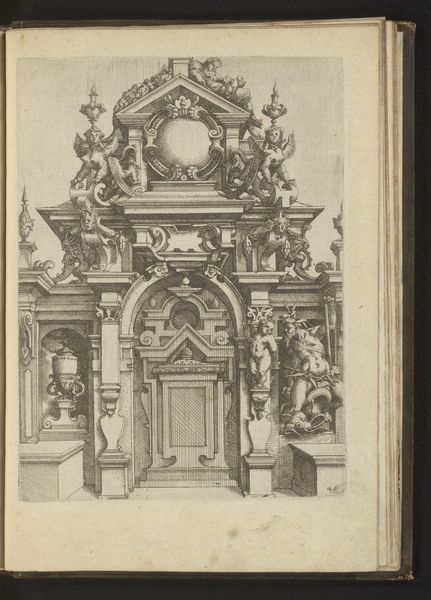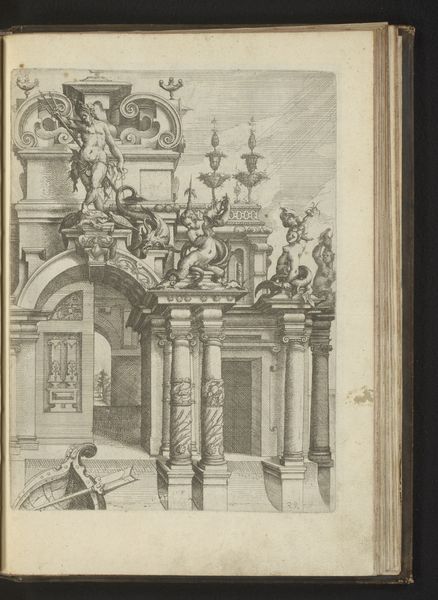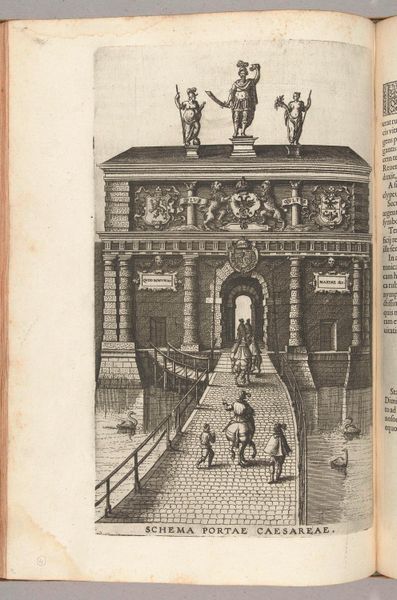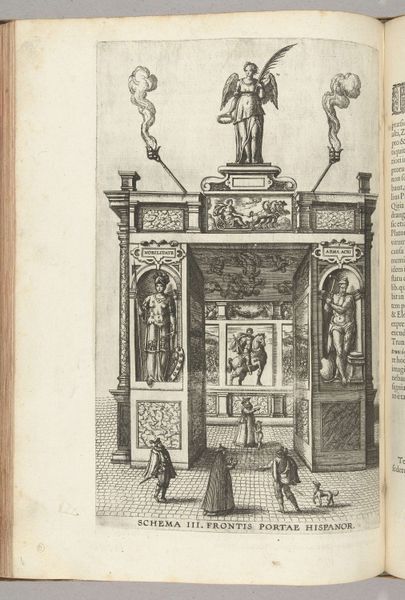
drawing, print, paper, ink, engraving, architecture
#
drawing
# print
#
perspective
#
figuration
#
paper
#
form
#
11_renaissance
#
ink
#
geometric
#
line
#
cityscape
#
history-painting
#
northern-renaissance
#
engraving
#
architecture
Dimensions: height 325 mm, width 203 mm
Copyright: Rijks Museum: Open Domain
Pieter van der Borcht's engraving, *Triomfboog van Milaan*, made in 1594, depicts a triumphal arch adorned with rich symbolism. The arch itself, a classical motif, signifies victory and imperial power, harking back to Roman traditions. Perched atop, the allegorical figures holding flags and shields speak of dominion and authority. Observe the figures flanking the arch, reminiscent of wild men or satyrs; these semi-human beings embody the untamed, primal aspects of nature. In ancient festivals, figures like these were often associated with fertility and the chaotic forces of the wilderness. We can see echoes of this symbolism in other contexts, such as the carnivalesque traditions of the Middle Ages, where the wild man appears as a symbol of unrestrained human instincts. Notice how the triumphant arch embodies a complex interplay between civilization and nature, power and primal instinct, inviting us to reflect on the deep-seated psychological and cultural forces that shape our understanding of authority and order.
Comments
No comments
Be the first to comment and join the conversation on the ultimate creative platform.

